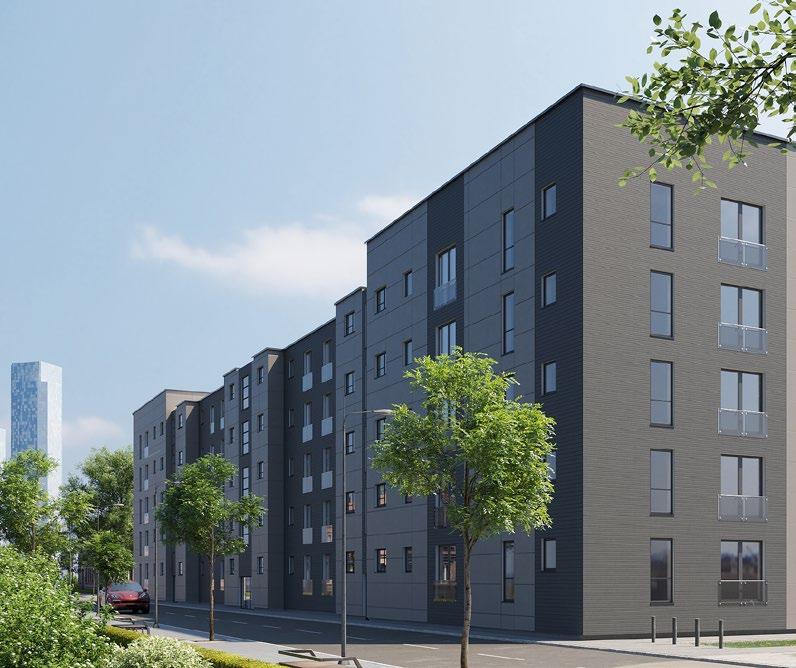

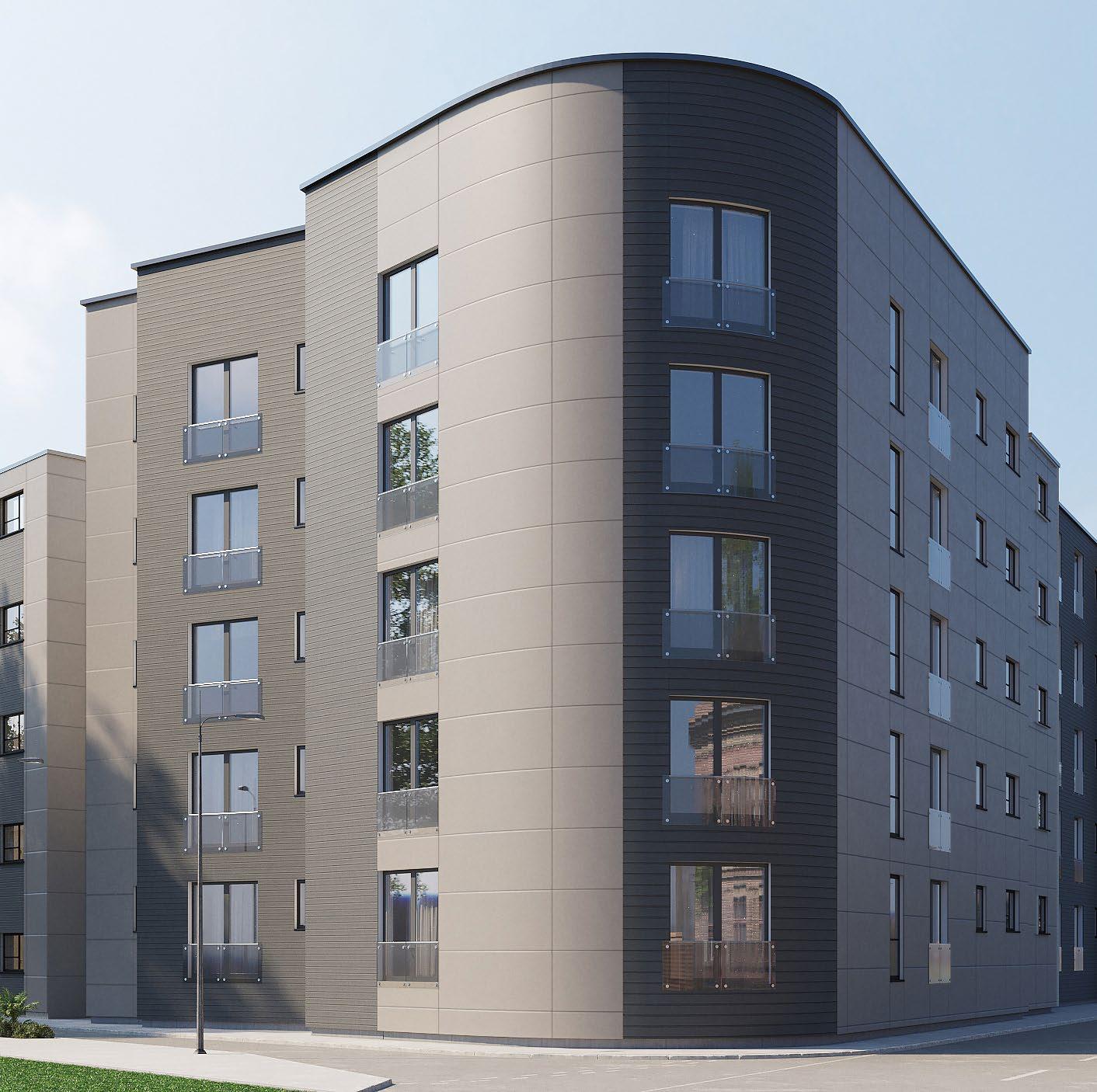




Manchester has long been famous for its rich history and innovative spirit. The birthplace of the modern industrial world, in recent years the city has diversified beyond its historic moniker of ‘Warehouse City’. With a thriving cultural and leisure scene, as well as first class employment opportunities, Manchester is undergoing an exciting economic renaissance. Global employers such as Google and HSBC have been attracted to the city, as well as the BBC in a motion to relocate the entertainment industry from London to Manchester’s MediaCityUK.

Located in the south-west of the city centre, the Deansgate and Castlefield districts of Manchester are renowned for their historic canals and lively high streets. A burgeoning bar and food scene is prominent in the area, where young professionals congregate after a day’s work. The variety of establishments offer entertainment for every age, budget and taste. Located slightly further out is the business and enterprise hub of Trafford with the highest number of companies per capita. Businesses small and large – from tech start-ups to international corporations – have established a presence in the vicinity.
Trafford is not only a corporate hub, but renowned for its excellent leisure activities, with sporting at the forefront. Home to Manchester United’s football stadium (Old Trafford) and Lancashire County Cricket Club, Trafford sees plenty of foot traffic from around the country for major national events. The city also offers excellent interconnectivity.
Manchester airport, the UK’s second-largest, is just a 10-minute drive away with direct flights to commercial centres both in the UK and across the globe. Locally, it is also well connected through the largest tram network in the UK and soon to connect to the High Speed 2 (HS2) rail network.
The Bailey is a modern development comprised of 104 one- and two-bed apartments situated alongside St George’s Park with views of Deansgate to the northeast.
Located between Trafford and Manchester City Centre, The Bailey is believed to be extremely popular with tenants. The Manchester Metropolitan University and The University of Manchester are only a mile from the development - a walkable distance for many of the students that continue to underpin Manchester’s robust rental market. Deansgate train station is also only a 15-minute walk away and in under 5 minutes, the nearest bus stop can provide residents with convenient access to all the city has to offer.


(BLOCK D)
Avg Prices (Available)
One Beds - £184,995 to £219,995 (£437 psf)
Two Beds - £234,995 to £269,995 (£407 psf)
Avg Prices (Available)
Two Beds - £265,000 to £308,000 (£485 psf)
Average prices (Available)
Two-Beds - £404,000 to £502,000 (£525 psf)
Average Prices
One-Beds - £170,000 to £200,000 (£382 psf)
Two-Beds - £244,000 to £268,000 (£360 psf)
Avg Prices incl. parking (where applicable)
One Bed - £237,450 (£374 psf)
Two Beds - £249,950 to £314,950 (£388 psf)
Avg Prices (Available)
Studio - £140,000 to £148,729 (£535 psf)
Avg Prices (Available)
One Beds - £169,983 to £267,581 (£437 psf)
Two Beds - £242,077 to £548,234 (£405 psf)

• Windows replaced with new UPVC
• Veneer finished doors with chrome handles
• Skirting and architraves in softwood or MDF
• Finished with plasterboard
• Full height ceramic tiling to shower/bath/sink areas
• White colour paint on ceilings and woodwork
• Natural hessian emulsion paint on walls
• Wood-effect vinyl plank throughout the apartments

• Carpet tiling in bedrooms
• Carron Phoenix single bowl stainless steel sink with chrome mixer tap
• Electric oven (Zanussi or equivalent)
• Ceramic Hob (Zanussi or equivalent)
• Indesit 60 cm chimney extractor hood and glass splash back
• Integrated fridge freezer
• Condensing washer/dryer
• Integrated dishwasher
• Worktops and up-stands finished in Black Everest Crystal colour
• Drawer System are to be 15mm chipboard base, metal enamel coated drawer sides/back
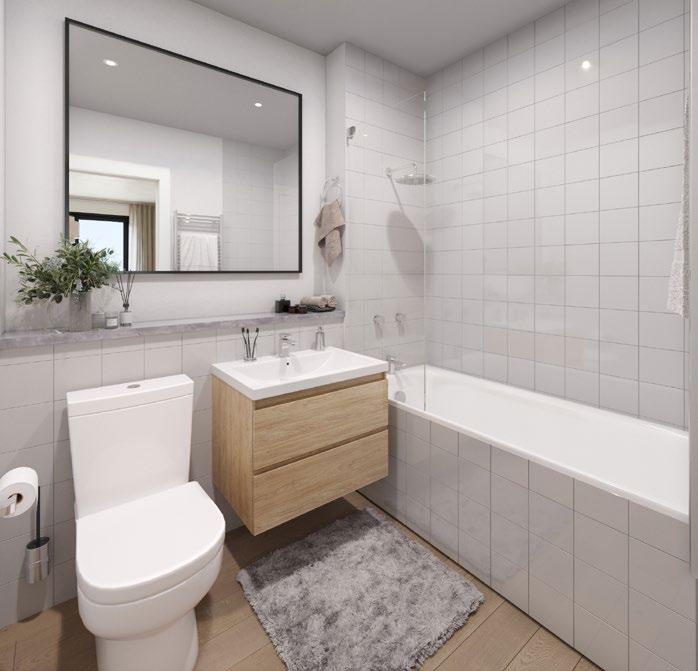
• White close-coupled toilet with chrome dual flush
• White hand basin set in driftwood vanity unit with chrome tap
• White bath with chrome mixer shower, riser rail and single glass shower screen
• Tiles to full height in wet areas and half height to rest of bathroom
• Standard light pendants to all rooms with low energy light fittings and chrome downlights to kitchen areas and bathrooms
• Switches, sockets and other electrical outlets in white plastic
• Telephone operated main front door entry system
• SKY Q Satellite facility at the back of TV point
• Heat detectors and smoke alarms installed in kitchens
• Telephone outlet point pre-wired in living room
• Pressurised cylinder hot water system and electric panel heaters for heating
With over 40 years of experience, Mandale Homes is the largest privatelyowned developer in North East England with experience in all areas of property development, from single homes to industrial commercial spaces. Their outstanding industry reputation has been recognised with eight UK Property Awards that are awarded based on excellence in quality, design, innovation, service, originality and commitment to sustainability.

Albion Place
A handsome refurbishment of 72 one and two bedroom apartments in Manchester’s Salford borough. Conveniently located next to key transport nodes into the city centre, all apartments have been impeccably designed in an openplan setting with ample natural lighting through wall-to-wall windows.
The Preston 57 one and two bedroom apartments were delivered in 2021 as part of an impressive renovation of a former derelict listed building in Leeds. IP Global sold all the apartments and the development was completed in time.



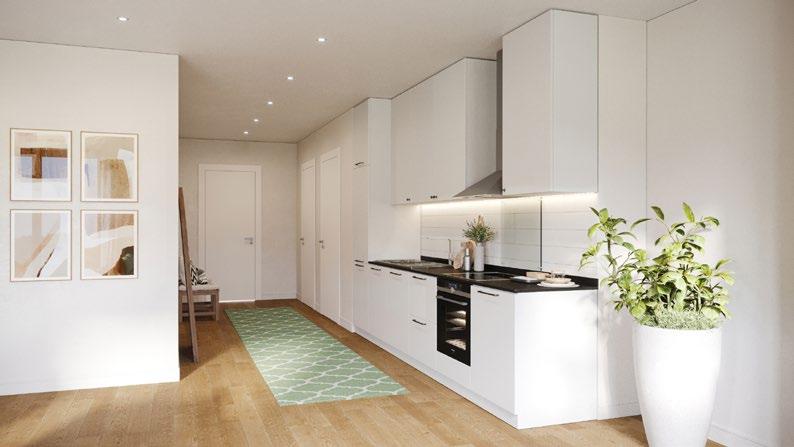
Arc Avenue
Soon to be completed, Arc Avenue is a thoughtful refurbishment of a Grade II listed building, comprised of 58 high-end one and two bedroom apartments. In this development, city living is combined with beautiful heritage in an ideal location on Gateshead’s iconic Quayside in Newcastle.
www.mandalehomes.com

Greater Manchester is a metropolitan county in North West England and is home to 2,852,650 people. It includes eight metropolitan boroughs: Bolton, Bury, Oldham, Rochdale, Stockport, Tameside, Trafford, Wigan, and the cities of Salford and Manchester. It is one of the country’s largest metropolitan regions, and the secondmost populous area in England, outside of London.
Due to its large population, Greater Manchester is one of the most economically diverse regions in the UK and is one of the main drivers of the northern economy. At present, there are approximately 1.5 million jobs that contribute towards Greater Manchester’s GVA of GBP74.9 billion (2021). The area generates nearly 40% of total output (GVA) in the North West and 19% across the North of England. Manchester, Salford and Trafford have seen the largest growth over the last 21 years, contributing 56% of Greater Manchester’s GVA in 2021.

The Northern Powerhouse initiative introduced in 2014 has positioned Manchester at its centre, a now-thriving cosmopolitan city built upon an industrious legacy.

Located 163 miles north-west of London, the city of Manchester is rich in history and industrial heritage. The area dates back to the Roman Empire and later became an integral part of Britain’s industrial revolution. Manchester’s* strategic geographical location, and natural resources (predominantly coal) allowed the city and surrounding areas to capitalise on textile production during the Industrial Revolution. As a result, in the early 19th century, the extraordinary growth of Manchester’s cotton industry drove the town’s expansion and placed it at the heart of the global manufacturing and trade network. Manchester and its surrounding areas emerged as a complex industrial city, producing goods of every description.
The city became the world’s first industrialised metropolis during the 19th century, with the establishment of the Victoria University of Manchester (now The University of Manchester) in 1824. Manchester’s economic history during the second half of the 19th century was one of growth and diversification. This trend continued until deindustrialisation during the late 1970s that led to a deterioration in the economic environment.
Today, Manchester and its surrounding areas have grown beyond the predominately industrial origins into a diverse and state-of-the-art economic base, now the epicentre of the Northern Powerhouse. It is also rich in sporting history, with two of the world’s largest football teams, Manchester United and Manchester City F.C, calling the area home.
A city home to more than 25 Nobel Prize Winners, Manchester has many impressive accolades to its name:
Base of the world’s oldest professional football league Where Ernest Rutherford split the atom
Home to the first public library
Birthplace of the world’s first computer
World’s oldest railway station
Manchester’s Palace Theatre is a premier provincial touring venue. It can seat almost 2,000 people and plays host to some of the best shows touring from London’s West End.
Also located in the city centre is the Manchester Opera House, which despite its name, hosts an eclectic variety of theatre, music, ballet, and comedy. The iconic Grade II Listed building can seat 1,920 patrons and originally opened its doors in 1912.

Manchester is home to two of the most famous football clubs in the world, Manchester United and Manchester City. Manchester United is the world’s 4th most valuable football club, regularly hosting sell-out crowds of 85,000+ at their Old Trafford stadium. Manchester is so well-entwined with its footballing heritage that the city houses the national football museum.
As well as premier league football, the city also hosts international cricket at Old Trafford Cricket Ground and premiership rugby games.

Manchester has an abundance of museums, including the acclaimed Imperial War Museum North. Steelwork from the collapsed NYC World Trade Centre and an array of military vehicles are among its vast collections of 2,000 objects on display.
Another popular attraction is the Science and Industry Museum, which focuses on Manchester’s industrial past and innovations that changed the world. In 2021, the museum unveiled a new GBP5 million multi-purpose exhibition gallery.

The population grew consistently year-on-year until the 1960s, when a number of manufacturing jobs began moving to low wage countries. This ushered in a period of economic decline and depopulation for Manchester.

The trend persisted until the early 2000s, when an economic revival began to take shape. As a result of renewed economic growth, the number of residents in the area began to rise once again. Manchester’s working population has increased by 31% in the last 20 years, compared to the UK’s national average of 16%. The city of Manchester is currently the 5th most populous in the UK, registering 558,640 residents as of 2021. Combined with the areas of Trafford and Salford, the total population figure is expected to reach more than 1,136,280 by 2035, a 33% increase since 2000.
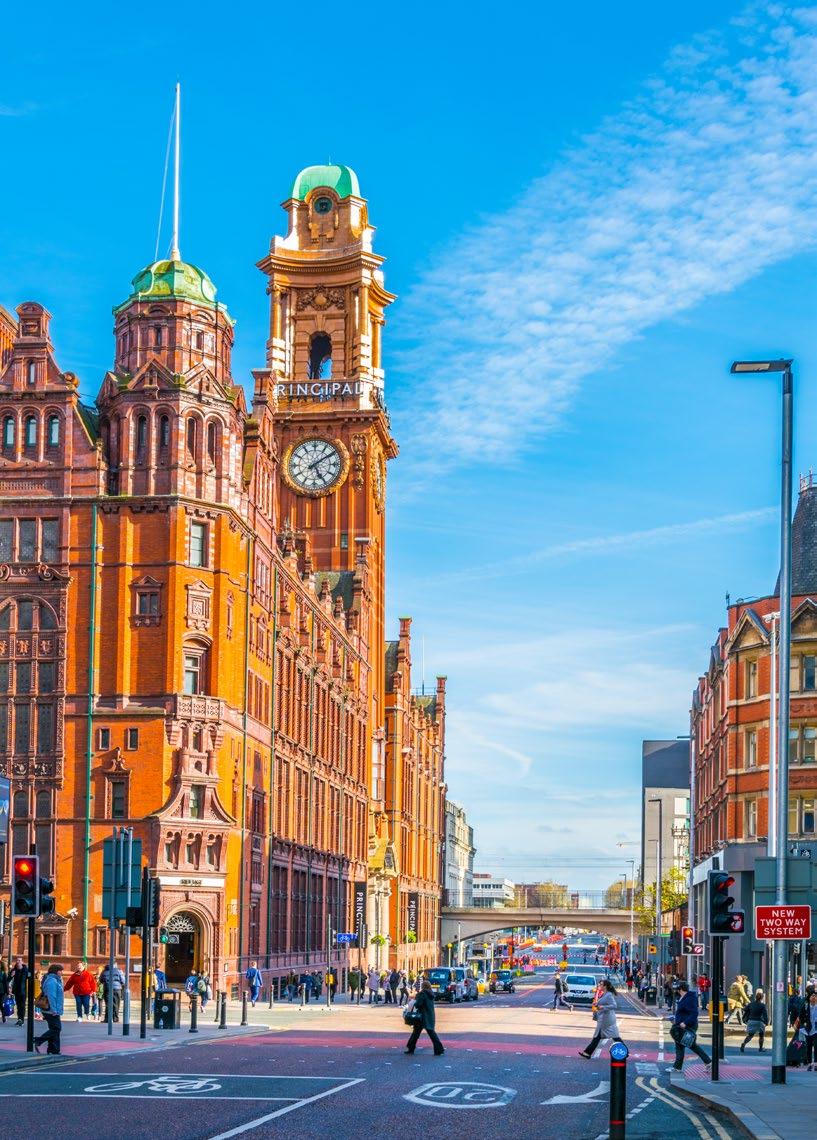
Manchester underwent a significant transformation during the Industrial Revolution, attracting entrepreneurs and manufacturers in abundance.
Since the days of the industrial revolution, Manchester has played an important role in shaping the UK’s economy. Manchester generates the largest UK economic output outside of London, with a diverse economy driven by three distinct sectors:
283,000 employees
86,000+ tech professionals
80+ fintech companies UK’s #1 regional legal services centre outside London
Manchester is home to one of the UK’s largest regional banking, financial services, and accountancy sectors. The UK’s major retail banks have located their regional corporate headquarters to Manchester, with the sector providing 60,000 jobs. The accountancy sector employs 22,500 people across private practice and the wider industry.
Notable Employers: HSBC, Barclays, Royal Bank of Scotland, BYN Mellon, PwC, Deloitte, KPMG
Manchester has the fastest growing FinTech ecosystem in the UK, and one of Europe’s largest digital and technology clusters.
Notable Employers: OakNorth, Klarna, MoneySuperMarket, Flywire.
Manchester is one of the primary legal centres, having the highest representation of the top 100 UK law firms and the highest number of legal office and fee-earners outside of London.
Notable Employers: Addleshaw Goddard, DLA Piper, Eversheds Sutherland, Pinsent Masons, DWF.
19,000 creative, digital and tech companies
78,600 creative & tech professionals
8,340 advanced manufacturing companies
Europe’s largest school of materials
88,000 people working in creative & digital companies
UK’s fastest growing cyber ecosystem
Manchester has seen phenomenal growth in the number of online retailers based in the city region, which is now home to the UK’s largest concentration of eCommerce start-ups.
Notable Employers: Google, Rentalcars.com, N Brown, AutoTrader.
Manchester has become a world-class media production powerhouse in the previous decade. The Voice UK, Who Wants To Be A Millionaire? and the British Soap Awards have all been staged in MediaCityUK’s studio and postproduction facility Dock10. Moreover, Manchester’s city core has become a hotspot for high-profile productions like The Stranger, Peaky Blinders, and The Crown.
Notable Employers: ITV Studios, BBC, Warner Bros, Peel Media.
Manchester’s MediaCityUK is home to the UK’s first immersive 5G hub and offers a unique and super-connected ‘mini-city’ environment from which to test and pilot IoT and smart city technologies within.
Notable Employers: Vodafone, BT, TalkTalk, Huawei, Tech Mahindra, IBM.
Source: Invest Manchester, Business Manchester
900+ companies in food & beverage sector Birthplace of Graphene –a material 100-300 times stronger than steel
Manchester is home to an advanced manufacturing materials cluster with a focus on sustainable packaging, technical textiles, surfaces and coatings, composites, and light alloys.
With the best international connectivity in the UK outside of London, and multi-modal transport capabilities across sea, road, rail and air - Manchester is the Northern gateway to global supply chains. The city is the preferred distribution hub for firms such as: Adidas, Argos, L’Oréal, Next, Amazon, and Kellogg’s
Manchester is at the heart of the largest aerospace cluster in Europe and the UK’s second largest automotive cluster, offering easy access to end manufacturers, and is perfectly located for supply chain opportunities in the UK’s automotive, aerospace and rail industries.
Notable Employers: Jaguar Landover, Siemens, Rolls Royce, Airbus
As result of successful economic initiatives such as the Northern Powerhouse project, Manchester’s GVA has grown by 67% since 2000, totalling GBP42.2 billion as of 2021. Following a small dip in 2021 due to the global pandemic, the economy is expected to produce GBP56 billion per annum by 2035. At the same time, average GVA per capita has risen 34% since 2000 and is expected to increase by a further 24%, reaching GBP49,278 by 2035.


While the city of Manchester has seen very impressive levels of economic growth since the early 2000s, the incomes and wealth of its residents have increased in a similar fashion. Average household disposable incomes have increased by 99% between 2000 and 2021. This trend is expected to continue, with households seeing a further 56% rise and reaching GBP62,620 by 2035.

After experiencing a slight increase due to the pandemic, the unemployment rate will resume its overall downward trajectory in line with the recovery from 2022.
The number of households in the city earning less than EUR35,000 per year is declining at a rapid rate. At the same time, the number of households entering the middle-and-upper-income bands is rising dramatically. By 2035, the number of households in the higher income brackets (EUR100,000+) will have grown by 273% since 2021 and 1,191% cumulatively since 2010.
Manchester’s tram dates back to 1901 when the Manchester Corporation Tramways came into operation. Today, the city and surrounding areas are serviced by the Manchester Metrolink, a light rail system carrying 110,000 commuters daily. As part of the ‘Greater Manchester Transport Strategy 2040’, the Manchester Metrolink network recently underwent a GBP350 million project to extend the Trafford Park Line with future plans to extend to nearby commuter towns such as Wigan and Stockport. Once completed, the tram network will be one of the largest in Europe, intrinsically connecting the economic centres with surrounding residential areas.
Manchester’s strategic location and transportation network via rail, road, and air provide excellent connectivity throughout the UK and abroad.

Manchester’s Piccadilly Station is well connected with direct lines to cities such as London and Birmingham. Between 2019 and 2020, the station recorded 32.1 million entries and exits.
Manchester already benefits from excellent rail links to key UK hubs, and the highspeed HS2 rail line (currently under development) will further shorten journey times. Connecting Manchester and London in just over 1 hour, expected to create 180,000 new jobs and contribute GBP1.3 billion per annum to Greater Manchester’s economy once completed.
Manchester Airport is the largest in the UK outside of London. As a truly global hub, the airport provides its 23.5 million passengers with direct flights to 225 destinations, including the world’s commercial centres such as Dubai, New York, and Hong Kong.
An integrated HS2 station at Manchester Airport will enhance accessibility. It will strengthen the airport’s position as an international gateway and expand the economic effect of the Airport City Enterprise Zone, expected to attract global companies and create 20,000 jobs over the next 10 years.
Manchester’s highly regarded education system and exceptional lifestyle has attracted many students from both the UK and abroad. The city makes a prestigious feature on the Top 50 Best Student Cities list (QS World University Rankings).

With more than 100,000 students, the majority of whom are enrolled in the three most prominent universities; Manchester has one of the largest student populations in Europe. It also has one of the largest volumes of international students at 26,000 and a graduate retention rate of 51%, second only to London in the UK. The high graduate retention rate has resulted in 38% of Manchester’s population being under the age of 25. These contributing factors bode well for a strong rental market and add to the growing local economy as major firms establish offices to take advantage of the young and highly educated talent pool.
The world-renowned University of Manchester is the city’s largest, ranking 5th in the UK and 51st globally. It has over 10,000 members of staff as well as 36,557 students (of which 41% are international) and offers more than 1,000 higher education courses. It also has an impressive 25 Nobel Prize winners among its current and former students and staff. It is a member of the prestigious Russell Group, with over a third of the university’s research classified as world-leading.
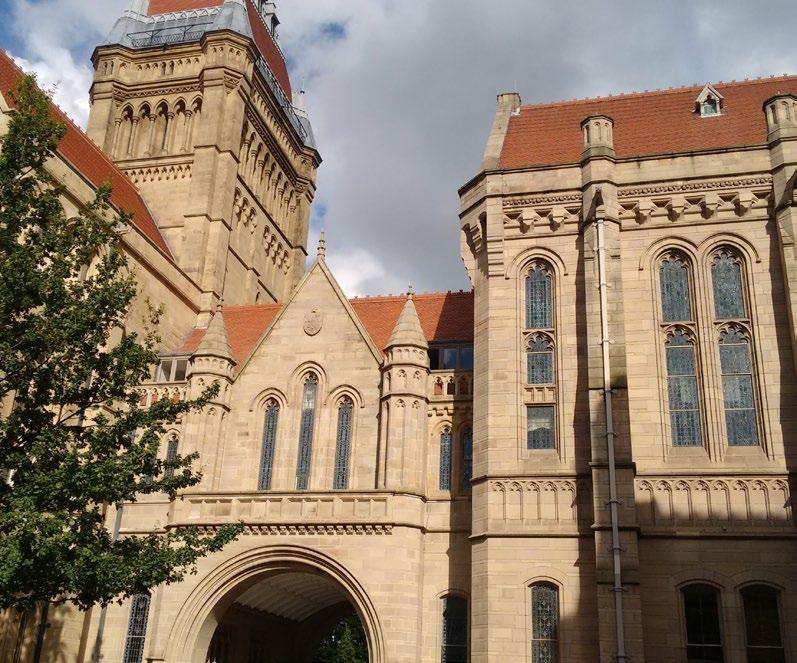


Manchester Metropolitan University is Manchester’s second largest, with over 28,375 students (of which 17% are international). It attracts the 3rd highest number of applications out of any university in the UK and prides itself on strong partnerships with corporate organisations at a regional, national, and international level, including the BBC and IBM.
The University of Salford is the fastest-growing university in the North West and the fifth fastest-growing in the UK. It currently has 16,793 students enrolled, of which 20% are international. The university is also the highest-ranking for student satisfaction in Greater Manchester. Almost two thirds of the graduates stay for employment in Greater Manchester after their studies, contributing GBP319 million in Gross Value Added (GVA) to Greater Manchester’s economy.

Manchester has undergone a remarkable transformation since the mid-1990s. Numerous successful projects such as Hulme - regarded as one of Europe’s most successful comprehensive regeneration projects of its kind - have attracted people back into the city.



The Manchester Core Strategy 2027 was established in 2012, focusing on urban renewal, economic development, education, and environmental reclamation. It aims to create a sustainable and accessible city that is highly ranked not only in Europe but around the world. The strategy established key regeneration areas that are spread across Manchester.
Sources: https://circlesquaremanchester.com
St John’s is a GBP1 billion development of a 15-acre plot within the heart of Manchester set to be completed in 2025. The development will see up to 2,500 new homes, circa 600,000 sq ft of workspace (mostly aimed at creative industries) and up to 400,000 sq ft of leisure space, incorporating some of the existing entertainment and studio buildings. The development is comprised of three nodes: Enterprise, Culture and Living.

Enterprise City is an inspirational new district of the city located within St. John’s and its wider regeneration. The new development is set to be completed in 2025 and will be one of Europe’s most concentrated city centre hubs for digital, creative and media enterprises, supporting local businesses while also attracting global companies. Enterprise City will feature 500,000 sq ft of space across an integrated series of buildings and is expected to create approximately 10,000 new jobs for Manchester.
The Factory is a GBP 110 million development which is due to open in 2023 and will be Europe’s largest and newest arts and performance venue. It will be the new home of the world-renowned Manchester International Festival, which sees over 300,000 visitors a year. The Factory will be ultra-versatile, enabling large-scale artistic works of invention and ambition. Dance, theatre, music, opera and visual arts will come together with technology in groundbreaking combinations to push boundaries and facilitate art of the future.
REGENERATION AREAS:
NOMA is Manchester’s GBP800 million development set to be completed in 2025. When completed, the development will consist of 4 million sq ft of new and refurbished offices, retail, and leisure space. The first commercial building was completed in 2018 with the likes of Amazon (first HQ outside of London), Deloitte, WeWork, and Co-op, making NOMA their choice of home. To date, employment within NOMA is currently just over 6,000, with the total number of jobs expected to reach 15,000 once completed.
Circle Square is Manchester’s GBP750 million mixed-used development scheme that is expected to be completed in 2023.



The 2.4 million sq ft development is set to be completed in three phases, with No.1 Circle and No.2 Circle already completed in 2020. The development aims to create 10,000 new jobs with prominent businesses, such as Hilti, Xero and Hewlett Packard. The fully completed development will consist of 1.2 million sq ft of workspace, 1,700 new homes and over 100,000 sq ft of retail, leisure space, restaurants, bars, and cafes. The development will be centred around Symphony Park. This vast new park, the first in the city for a generation, will host a variety of community and cultural events celebrating the city’s dynamic and creative community for residents and visitors alike.

MediaCityUK is a 200-acre mixed-use property development on the banks of the Manchester Ship Canal in Salford.
The 36-acre first phase of the development (completed in 2011) provides a purpose-built home for creative and digital businesses. Centred around a waterfront public realm area twice the size of London’s Trafalgar Square, MediaCityUK has become a destination in its own right, attracting many London based businesses such as BBC, ITV Studios, and SIS LIVE.

The second phase of MediaCityUK has begun. The GBP1 billion development is set to double the size of MediaCityUK over the next decade. The masterplan for the 7.7-hectare development aims to add an additional 1,871 new homes, 1,800 parking spaces, 47,361 sq ft of retail and leisure space and 538,195 sq ft of office space to the area.
The development is also planning to include the UK’s largest private-rented sector residential development to meet the area’s enormous rental demand. The region is experiencing a boom with MediaCityUK solely responsible for 8,000 jobs and up to 30,000 people employed across the wider area of Salford Quays. Expectations are for this to increase to 60,000 jobs by 2040.
In 2011, the BBC embarked on one of its most ambitious projects to relocate to MediaCityUK. The GBP200 million move aimed to create a new centre of excellence outside London for production, technology development, training, and digital media. Following the BBC’s move, MediaCityUK has seen substantial increases in finances, boosts in certain creative sectors, and a 142% increase in employment created in the digital sector in Salford. In 2021, the BBC announced its plans to further expand its presence in MediaCityUK. Proposals set out in the ‘BBC Across the UK plan’ aims to add a further 400 jobs to its MediaCityUK base of 3,500 staff.
ITV Granada completed the first phase of its move to MediaCityUK on 25 March 2013, followed in two stages by the northern arm of ITV Studios: the second stage involved Coronation Street being moved to a new production facility on Trafford Wharf next to the Imperial War Museum North at the end of 2013. Today, The MediaCityUK is home to approximately 750 ITV employees at ITV Granada and ITV Studios.
In 2011 SIS LIVE (now NEP Connect) announced it would move its headquarters from London to MediaCityUK. SIS LIVE established a new broadcasting site in Salford Quays made up of nine satellite dishes transmitting live sports programming to more than 10,500 bookmakers’ shops worldwide. The move generated around 70 new jobs, with approximately 30 staff members relocating from London. Today, NEP Connect employs over 850 staff members in MediaCityUK.

In 2018, Kellogg’s announced that it would be moving all 420 employees to its new Northern headquarters in MediaCityUK. Kellogg’s occupies over 48,000 sq ft in MediaCityUK and houses employees who run the company’s UK and Irish sales and marketing business. This location supports functions for its European operations, including those involved in research, food development, marketing, sales, human resources and finance.

Ericsson established a new northern broadcast and media services base in MediaCityUK in 2017, in order to deliver 24/7 playout and media management services for clients, including the BBC. The location employs over 55 staff. They provide world-class broadcast and media services facilities which include playout suites, continuity and quality control areas, media management areas, master control facilities and a network operations centre. The broadcast centre also houses a creative studio – home to Ericsson’s creative agency Red Bee.
AJ Bell, with over 418,000 customers, is one of the UK’s largest providers of online investment platforms and stockbroker services. Since the company moved its headquarters to Salford Quays in 2017, the number of staff members has increased from 450 to 856.




TalkTalk is the UK’s leading value for money connectivity provider. TalkTalk provides landline, broadband, TV and mobile services to over four million customers. It operates Britain’s biggest unbundled broadband network, covering 96% of the population, supplying services to consumers through the TalkTalk brand, to businesses through TalkTalk Business, and by wholesaling to resellers. TalkTalk moved its headquarters to Salford in 2019 and now employs over 1,800 people in Salford Quays.

Manchester’s population declined in the 1960s as a consequence of deindustrialisation, however this trend was reversed by the early 2000s owing to well-executed economic initiatives. The number of residents has grown from 851,780 in 2000 to 1,060,300 in 2021, averaging 10,375 newcomers per annum. By 2035, the population is projected to reach in excess of 1,136,280 residents, an increase of 33% from 2000. This rise in population has provided a huge boost to the economy, while placing more strain on the already undersupplied housing market.
Despite the considerable construction activity, the housing supply has been unsuccessful in maintaining pace with demand. Since 2011, 37,460 units were added to the housing stock from a required 109,291. As a result, there is a substantial undersupply of residential homes, with just 34% of the city’s housing needs fulfilled over the past 9 years.
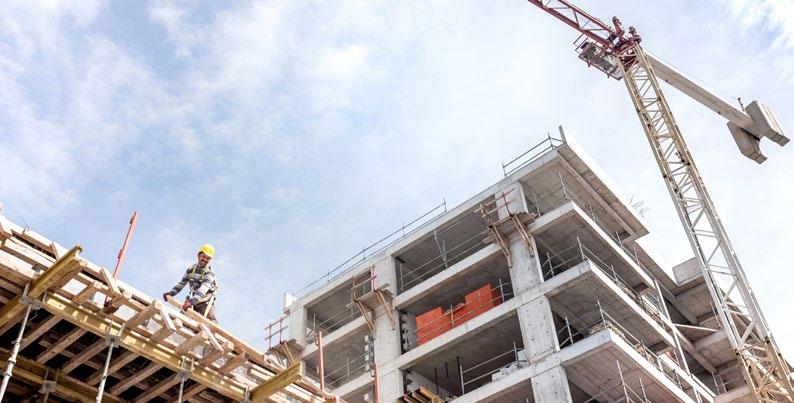
It is expected that 5,545 housing units will be completed per year between 2020 and 2031. This is below the average annual housing requirement of 6,515 units. Taking the current backlog and future housing requirement into account, an undersupply of at least 82,505 housing units could persist by 2031.

Due to the combination of substantial economic growth and a consistently undersupplied housing market, house prices in Manchester have increased by 72% since 2010 compared to the national average of 53%. The numerous regeneration projects and investment in public transport improvements have made the connection between the city of Manchester, Salford, and Trafford more prevalent than ever. This growth trend is expected to continue for the foreseeable future, with house prices forecast to increase 25.7% between 2022 and 2026.
Manchester City’s rent prices have increased by 20% over the last 5 years, compared to the broader North West region at 11%. Between 2022 and 2026, rents in Manchester City are expected to increase by a further 15.9%, surpassing the national average of 12% over the same period.
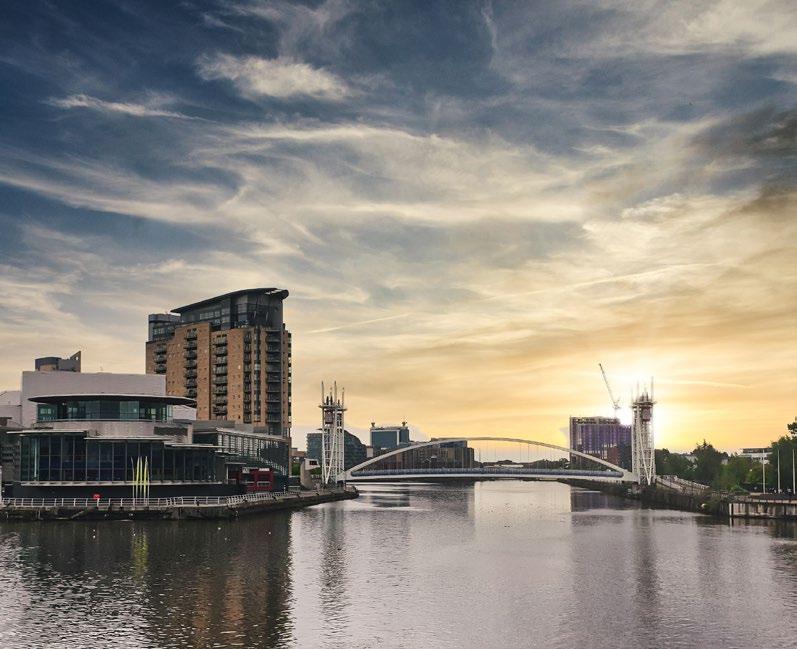
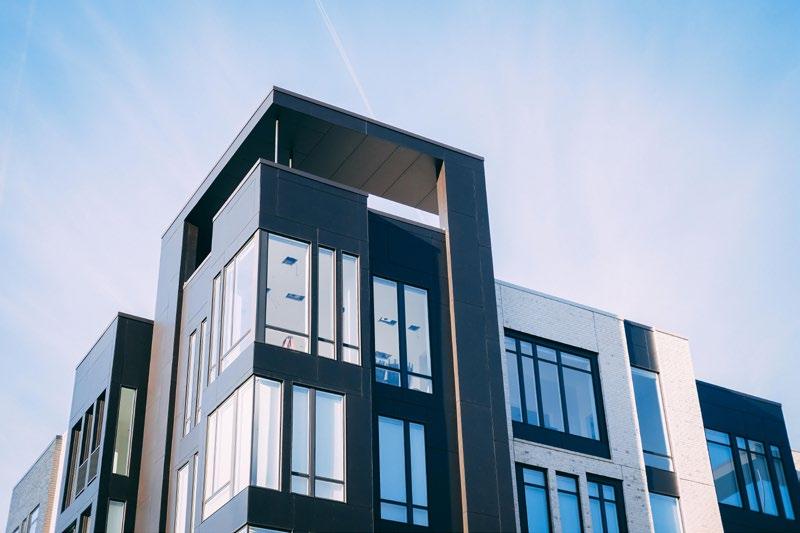
Please note: floor plans, prices and images are for information purposes only and are subject to change from time to time. Areas shown are approximate measurements.
You acknowledge that: (i) the information contained in this document and such other material issued in connection therewith (the “Content”) are provided for information purposes only and will not be regarded as advice on securities or collective investment schemes or other financial or investment advice; (ii) the Content is not intended for the purpose of advice, dealing or trading in securities or collective investment schemes; (iii) the Content may include certain information taken from property surveys, stock exchanges and other sources from around the world; (iv) the Content is provided on an “as is” basis and by way of a summary and we do not guarantee the accuracy, completeness, or timeliness of the Content; (v) the Content may be subject to the terms and conditions of other agreements to which we are a party; (vi) none of the information contained in the Content constitutes a solicitation, offer, opinion, or recommendation by us to buy or sell any security, or provision of legal, tax, accounting, or investment advice or services regarding the profitability or suitability of any security or investment; (vii) you should not rely on the Content as the sole means of making any investment decision relating thereto and you should seek professional, independent and specific advice on any such investment decision; (viii) the property market is volatile and illiquid and property prices and rental yields may fluctuate widely or be affected by a broad range of risk factors; (ix) all plans and specifications in the Content are intended as a guide only and are subject to such variations, modifications and amendments as may be required by the relevant authorities or the relevant developer’s consultants or architects; (x) all renderings and illustrations in the Content are artists’ impressions only and all measurements are approximate subject to final survey and confirmation; (xi) the Content is not intended for use by, or distribution to, any person or entity in any jurisdiction or country where such use or distribution would be contrary to law or regulation; and (xii) the Content has not been authorised or approved by the Securities and Futures Commission of Hong Kong or any regulatory body of competent authority whether in Hong Kong or elsewhere. Accordingly, you assume all responsibility and risk for reliance upon and the use of the Content and, we, our agents, directors, officers, employees, representatives, successors, and assigns expressly disclaim any and all responsibility for any direct or consequential loss or damage of any kind whatsoever arising directly or indirectly from: (i) the use of the Content, (ii) reliance on any information contained in the Content, (iii) any error, omission or inaccuracy in any such information including, without limitation, financial data, forecasts, analysis and trends, or (iv) any action or non-performance resulting from the foregoing. This exclusion clause shall take effect to the fullest extent permitted by applicable laws.
Any statement contained in the Content is made on a general basis and we have not given any consideration to nor have we made any investigation of the investment objective, financial situation or particular need of any user or reader, any specific person or group of persons. You are advised to make your own assessment of the relevance, accuracy and adequacy of the information contained in the Content and conduct independent investigations as may be necessary or appropriate for the purpose of such assessment including the investment risks involved. You should consult an appropriate professional advisor for legal, tax, accounting, or investment advice specific to your situation, as to whether any governmental or other consents are required or if any formalities should be observed for the purposes of making such investments as are mentioned in the Content. If you are unsure about the meaning of any of the information contained in the Content, please consult your financial or other professional advisor.
References to third party publications are provided for your information only. The content of these publications are issued by third parties. As such, we are not responsible for the accuracy of information contained in those publications, nor shall we be held liable for any loss or damage arising from or related to their use.
